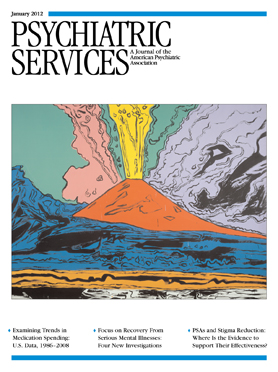Trends in Use of Second-Generation Antipsychotics for Treatment of Bipolar Disorder in the United States, 1998–2009
Abstract
Objective:
The authors examined trends in the use of second-generation antipsychotics for treatment of bipolar disorder before and after the U.S. Food and Drug Administration's approval in 2000 of olanzapine for use in treating acute manic episodes of bipolar disorder.
Methods:
The IMS Health National Disease and Therapeutic Index was used to derive monthly patient treatment visits between January 1998 and December 2009 by individuals 18 and older with a diagnosis of bipolar disorder who were treated with one or more pharmacotherapies.
Results:
The percentage of treatment visits in which a second-generation antipsychotic was prescribed increased from 18% in 1998 to 49% in 2009. Use of mood stabilizers and first-generation antipsychotics declined substantially. In the 12 months after approval of olanzapine for bipolar disorder, its use increased by 92%, and use of other second-generation antipsychotics increased by 42%.
Conclusions:
Second-generation antipsychotics are increasingly used for bipolar disorder, and their effectiveness compared with therapeutic alternatives merits further research. (Psychiatric Services 63:83–86, 2012)



